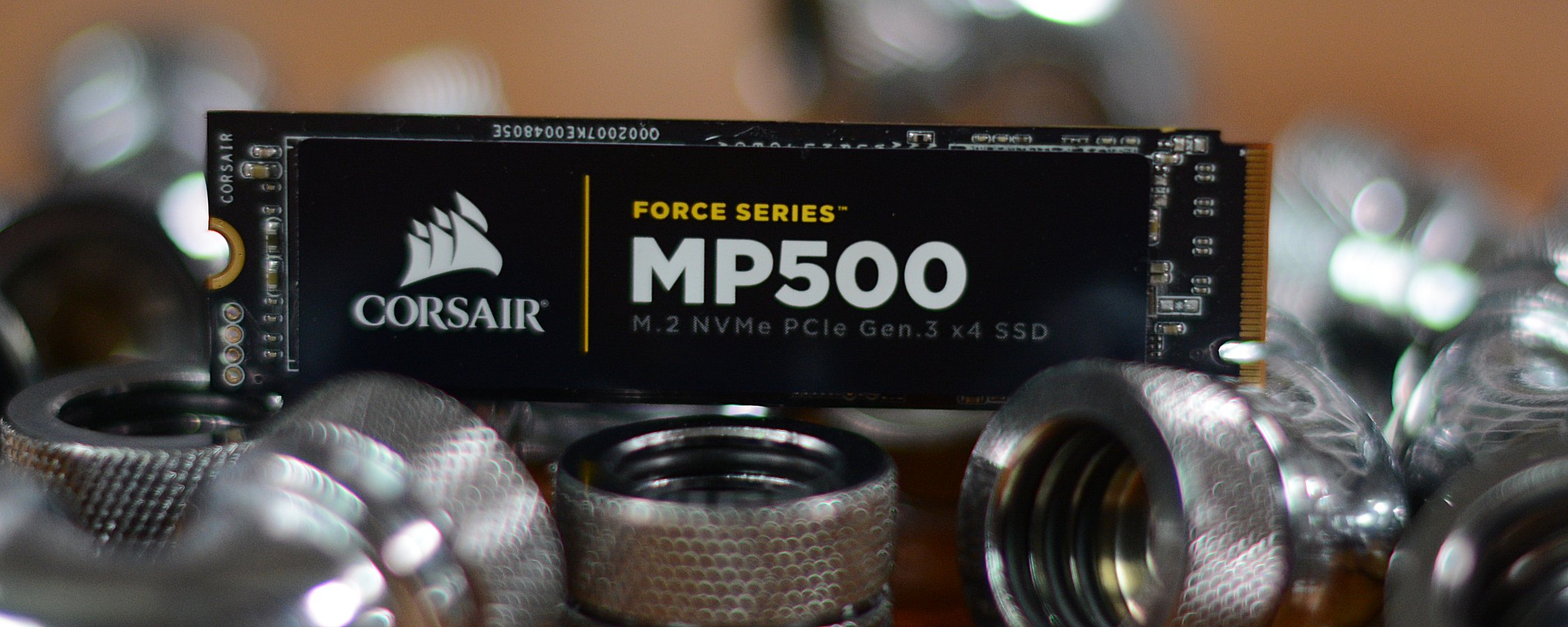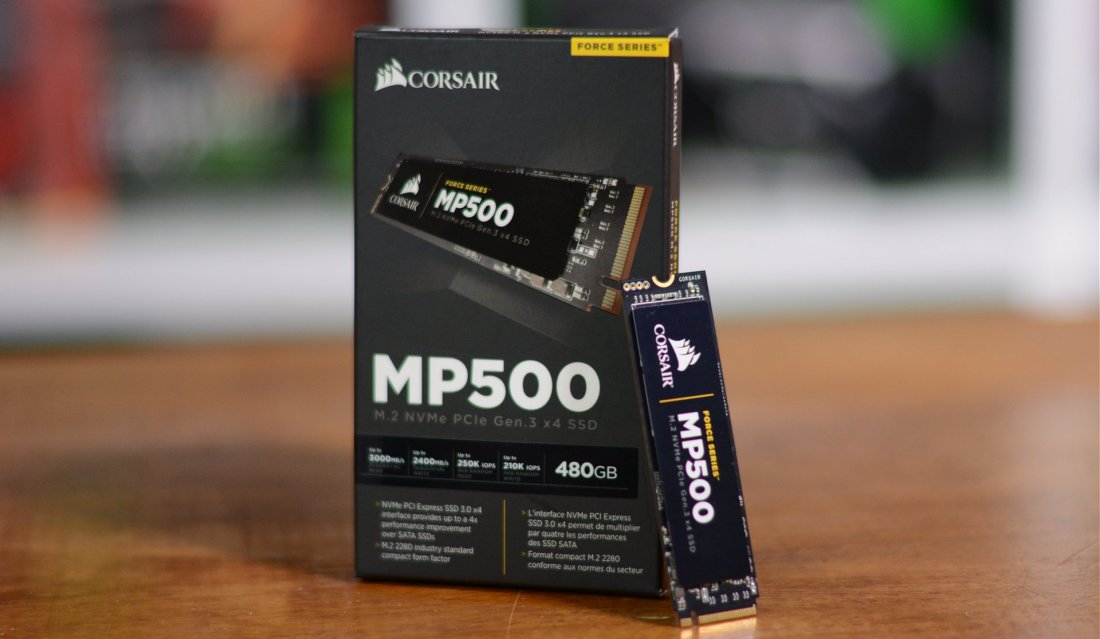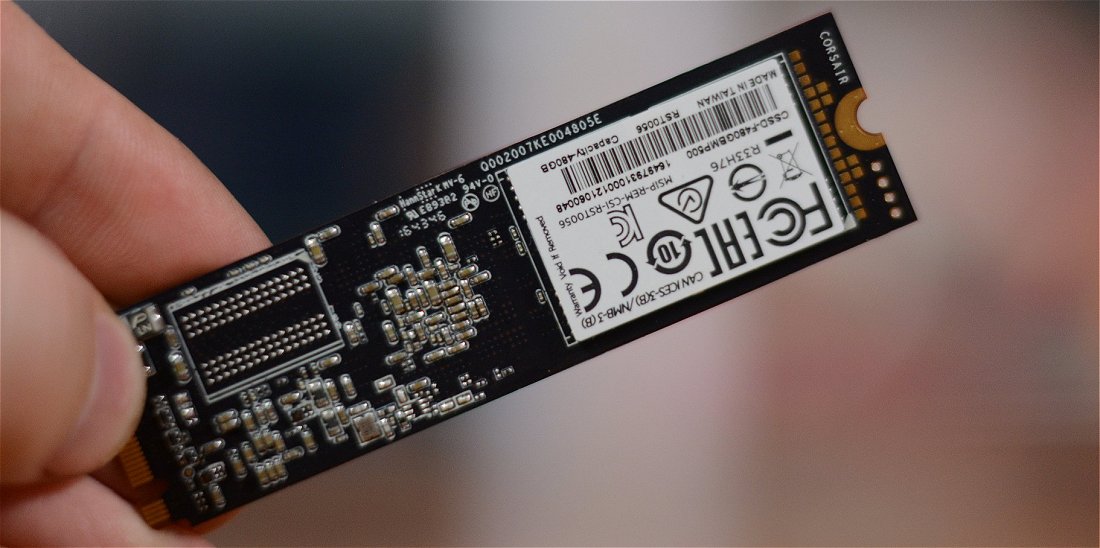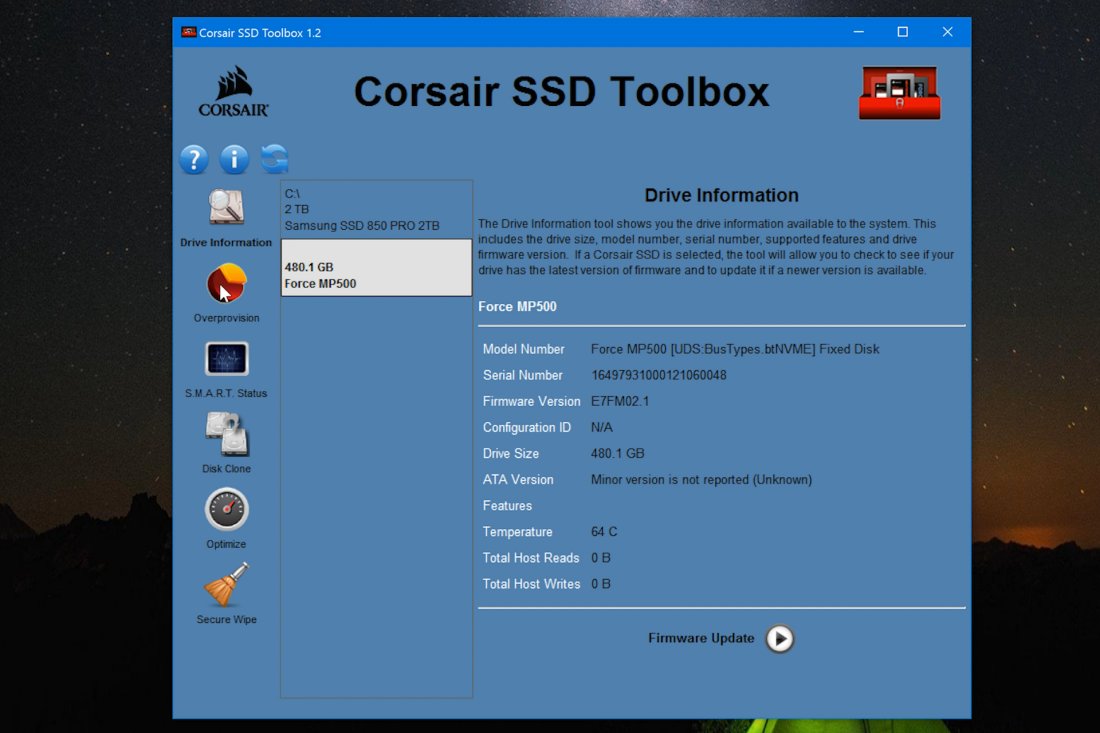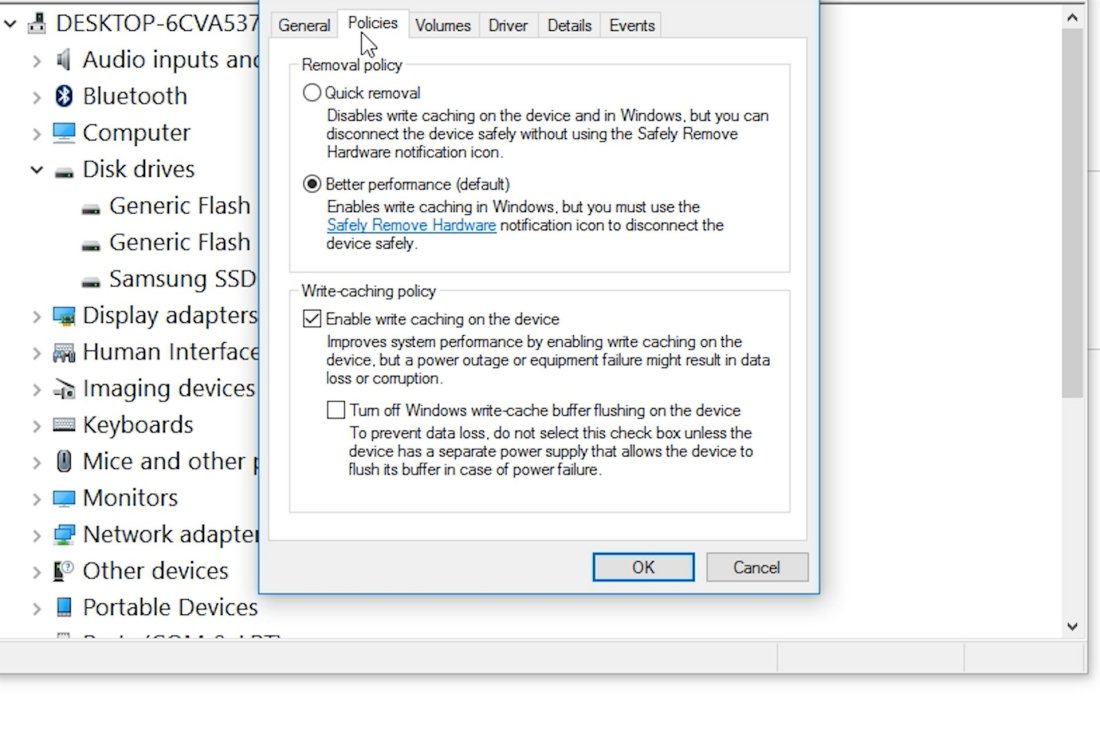Samsung has dominated the solid state storage scene for the past few years and they recently updated their SSD lineup with two of the fastest drives we've ever tested. The MLC-based SSD 960 Pro and the more affordable TLC 960 Evo, both reviewed and proven to be extremely fast NVMe SSDs.
A tough act to follow for the competition, even for the likes of Intel, Corsair announced the Force MP500 SSD shortly after the release of the Samsung 960 Series.
The Force MP500 is a high-speed NVMe SSD targeting power users. The drive takes advantage of the more desirable MLC type NAND flash. However, unlike the 960 Pro series, capacities are available below half a terabyte. In fact, Corsair is offering this new series with a maximum capacity of 480GB while it is also possible to purchase a 240GB version and even a piddly 120GBer.
Availability for the new Samsung drives hasn't been great, however given the performance on tap at $330 for the 512GB 960 Pro and $250 for the 500GB 960 Evo, they've able to single-handedly hold the competition at bay.
Intel's SSD 750 Series and Toshiba's OCZ RD400A simply can't compete at the same level, so we're looking forward to see how Corsair's top offering holds up. We have the MP500 480GB model on hand for review and at $325 it's priced to match the 960 Pro.
Actually, given the slight variation in capacity, the Corsair drive ends up a few cents more expensive per gigabyte, so the MP500 series isn't exactly affordable. However, on paper, Corsair's new flagship SSD series looks mighty impressive boasting sequential read/write speeds of 3GB/s and 2.4GB/s.
Before metaphorically seeing what the MP500 is made of, let's take that phrase literally...
What Makes the MP500 Tick?
Based on the M.2-2280 form-factor all MP500 models utilize the PCIe 3.0 x4 interface for a blistering fast sequential read speed of 3GB/s, coupled with an equally impressive write throughput of 2.4GB/s.
What's interesting is that Corsair is claiming the same sequential read and write performance for all three models (120GB, 240GB and 480GB), though there is a large discrepancy in IOPS, where the 120GB version severely lags behind the larger 240GB and 480GB models.
Whereas the 240GB and 480GB models are rated for 250,000 random read IOPS and 210,000 random write IOPS the 120GB model is good for just 150,000 read and 90,000 write IOPS.
So as you might expect performance will be down on the 120GB model, so just be aware of that. Again for testing we do have the 480GB model on hand and as the fastest model in the series we will be showing best case performance.
What's interesting about the new Force MP500 series and rather important to note is the fact that they are using MLC NAND memory, not the cheaper and less durable TLC stuff like the 960 Evo series.
Powering the MP500 series is a Phison controller, more specifically the PS5007-E7. So far there are very few SSDs in the wild using this controller and I am personally yet to see how it handles.
Connected to the controller is Toshiba's 15nm MLC NAND along with a 512MB DRAM buffer. Please note the 240GB model features a smaller 256MB buffer and the 120GB model comes with a 128MB buffer.
Currently AES 256-bit encryption isn't supported but Corsair hopes to deliver a firmware update soon to add in support. Finally, all three models are being backed by a three-year warranty, which isn't bad, though we would have liked to have seen them match Samsung's five-year warranty. Still, Corsair is claiming 698TB of written data rating, but of course you only have three years to prove them wrong.
How's the Software?
The Force MP500 series is backed by Corsair's tacky SSD Toolbox. It has to be said I'm used to seeing much more polished looking software from Corsair and I expect the SSD Toolbox to see some major upgrades in 2017. Most of the functions aren't compatible with NVMe drives at this point so MP500 owners can't view the drive's S.M.A.R.T. status or total host writes, run a secure wipe, change the overprovisioning or mess with the TRIM command settings.
Technically, the MP500 doesn't require any special drivers to work. That said, it does if you want to extract maximum performance from the drive and right now Corsair doesn't offer an NVMe driver. Samsung recently released a new NVM Express driver which greatly improved performance under Windows 10 and 8.1.
The problem being that these operating systems by default enable a write-cache buffer known as the Force Unit Access command, which drastically reduces performance. This command is a conservative approach taken by Microsoft to ensure data integrity in case of sudden power loss. However, from Windows 8 onwards, Microsoft incorporated an automatic FLUSH command to ensure data integrity, but it simultaneously maintained the much older Force Unit Access command in the standard drive settings.
This redundancy means that write speeds are significantly inhibited due to unnecessary write verification processes. By manually disabling the command, the write performance reached the expected levels. However, manually manipulating drive properties isn't user-friendly, which is obviously why Samsung developed the NVMe Driver 2.0 to do this automatically. Hopefully Corsair will follow suit and do the same.
